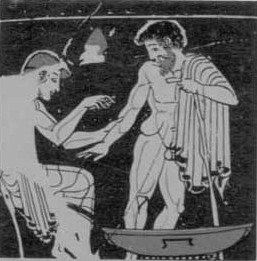The Panel “The Art of Medicine” Panel (part of the Art of Medicine campaign) took place yesterday from 9 – 11am at the Boston’s W Hotel, 100 Stuart St, Boston, MA
Our panelists from Left to Right
- John D. Halamka, MD, MS, CIO of Beth Israel Deaconess Medical Center (and Life as healthcare CIO blog and @jhalamka)
- Keith Dreyer, DO, PhD, FACR, Vice Chairman of Department of Radiology, Massachusetts General Hospital
- Adam Landman, MD, MS, MIS, MHS, CMIO, Health Information and Integration at Brigham and Women’s Hospital (@landmaad)
- Steven J. Stack, MD, past chair of the American Medical Association (AMA); served on multiple federal advisory groups for ONC on HIT, practicing emergency physician
and at the far right moderated by Paul Weygandt, MD, JD, MPH, MBA, CCS, CPE, Vice President of Physician Services, Nuance Communications
And it was very well attended:
Today, physicians are struggling to serve their patients’ needs in a healthcare system that seems to work against them at every turn. While technology has the potential to vastly improve healthcare overall, issues remain when it comes to usability, data-entry and complementing patient care vs. competing with it.
In part 1 I have attempted to capture the underlying sentiments and thoughts form our panelists together with some thoughts on potential ways to help resolve these areas and problems.
The panel opened with the original Art of Medicine video:
The session was divided into several separate discussions – the first of which the Issues of today:
There has been an increasing burden placed on physicians to document more and more detail but no additional time to do this and in fact probably less and they struggle with the increasing information over load and the challenge of processing – As John Halamka put it:
“We’re already overwhelmed with data, what we need is knowledge & wisdom” @jhalamka@NuanceHealth#artofmedicine
— Stephanie Rufo (@StephRufo27) March 27, 2014
This is combined with the increasing regulations which the panel viewed as directly linked to the increasing need for HealthIT tools to help deal with these regulations. As Adam Landmaan put it the design of the EHR’s is based on the design focus and in the current fee for service health system is designed largely support the physicians to capture and document optimize for bill not for patient care
But I thought Keith Dreyer captured the sentiment well when he described technology as decreasing our ability to communicate
And we are seeing declining capture off the patient’s story in the EHR
Some snapshots of ideas thoughts from our panelists included:
- IT tools driving “note bloat” of information that is non-specific to the patient
- Physicians need timely “wisdom” to positively effect patient care at the time of encounter
- “Big bang” of government funding for EHR adoption has generated massive amounts of information that is, at present, unmanageable
- At stage now of EHRs where they are “one size fits all,” so not customized to specific specialty/setting needs
- Need to identify the smallest number of moving parts (IT tools) to facilitate patient care
- Need for monolithic (“one size fits all”) IT solutions is driven by babel of nomenclature
- Quality measures show that there is a problem, but not the causality
There was much more discussions and thoughts on solutions but one of the concepts that stood out for me was this one from Adam Landmaan straight out of the Television Reality show – copying the Shark Tank concept
That will be an interesting panel and team event and look forward to hearing the results
We need to return to the Art of Medicine and as one panelist put it:
People sought out Doctors in the past even when they actively hurt you and bled you

They did this because the doctor provided compassion and care that had the best intentions – they cared about their patient and the Art of Medicine
You can see the #ArtofMedicine HashTag Social Media Statistics here and analytics here




